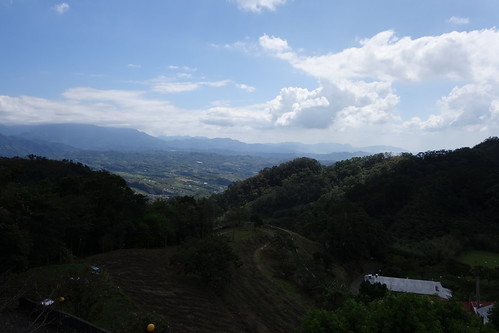This news is making the rounds:
Back in 1985, archaeologist Peter Bellwood of the Australian National University in Canberra proposed that the Lapita had roots in farming cultures in East Asia. Based on dating of Lapita sites, he proposed that they moved rapidly from mainland China to Taiwan and the Philippines, then out across the open ocean from Vanuatu to Samoa, covering 24,300 kilometers in about 300 years. This “express train” picture fit with linguists’ models, in which Austronesian languages spread from East Asia into Oceania and were distinct from Papuan languages in Melanesia.Dr. Frank Muyard, who has long been studying the history of the Austronesian peoples and their migrations, observed in a discussion online (posted with permission):
But other researchers argued that the DNA of living Polynesians showed evidence that their Lapita ancestors had lingered in Melanesia, mixing with the locals and slowly spreading eastward. This so-called “slow boat” model had prevailed in recent years.
In the new study, an international team extracted ancient DNA from the skeletons of four ancient women from the islands of Vanuatu and Tonga, dated to 2300 to 3100 years ago, including three directly associated with the Lapita culture. The team sequenced the DNA at up to 231,000 positions across the genomes of each skeleton and compared the sequences to those of nearly 800 present-day people from 83 populations in East Asia and Oceania.
The four women were from a distinct population that had no evidence of mixing with the ancestors of people living in Papua New Guinea today, as the team reports in Nature this week. Instead, the women shared all their ancestry with the indigenous Atayal people in Taiwan and the Kankanaey people in the Philippines. “The Lapita have no evidence for Papuan ancestry,” says co-author Pontus Skoglund, a postdoc in David Reich’s lab at Harvard Medical School in Boston. That suggests that their ancestors rode the fast train, sweeping all the way to Oceania without mixing with Melanesians on the way.
++++++++++
This is indeed huge, and a game-changing research for both fields of Southeast Asian/Pacific prehistory and Austronesian studies.
Many of the past 30 years assumptions and theories will have to be revised and revisited. It shows that ancient DNA studies are necessary to confirm/infirm research of populations origins, and that inference into the past based only on current genetic analysis can be easily flawed.
But the original Nature article is very light on info about the Taiwan populations studied. We are only told about a closest link to Atayal, and then, in another part of the article, of links to Amis, but we don't have the DNA analysis details. I would also like to see additional research on more Taiwan Indigenous groups data, since recent archaeological researches show that Taiwan peopling history is itself getting more complex than often assumed.
The distance showed between Lapita aDNA and current Dai (Tai-Kadai) DNA would also in theory dismiss the hypotheses of direct migration from South China to the Philippines, which have been opposed to the Out-of-Taiwan theory of Austronesian dispersal, although here also we would need aDNA from South China to confirm that.
[and in response to a later query]
This is indeed a confirmation of the Express train hypothesis supported by Bellwood, Blust and Diamond.
But the Bellwood-Blust theory has been challenged in many places for years and was not fully supported yet by genetic studies (same for the precise origins in Asian mainland for proto-Austronesian migration to Taiwan which are still much debated).
Now it is. The "game changing" is thus about the lack of mixing with the "Papuan" populations in the Bismark Archipelago (the Triple I hypothesis, Roger Green) and therefore non-hybrid nature of the Lapita culture and first colonization of Remote Oceania (up east to Tonga/Samoa).
The closest genetic link with the Kankanaey in N-W Philippines, rather than other places in the archipelago (this also will have to be confirmed by other studies) is also interesting both for the Taiwan-Philippines and the Philippines-Lapita relations.
The direct ancestor of Lapita distinct ceramics is still eluding research and now that it appears not being due to cultural hybridity in the Bismarck Arc. will certainly spur more investigation.
Expect more aDNA research in the whole region to try and back up various theories.
We also need to understand better the Atayal-Amis similarities/differences, and the repeatedly attested close links between Amis and Polynesians - both in genetics and culture. In any case, the ancestors of the Lapita people lived in Taiwan/Philippines 4000 years ago, and cannot be directly associated with present groups, much evolution/change happened since in Taiwan and in post-Lapita Polynesia.
And that would involve understanding better the late Neolithic/Metal Age interactions between Taiwan and the Philippines. Hopefully we will have more studies on that soon.
_______________________
[Taiwan] Don't miss the comments below! And check out my blog and its sidebars for events, links to previous posts and picture posts, and scores of links to other Taiwan blogs and forums!

1 comment:
Oh no, China is now going to claim Vanuatu as an integral part of China since ancient times!
Post a Comment